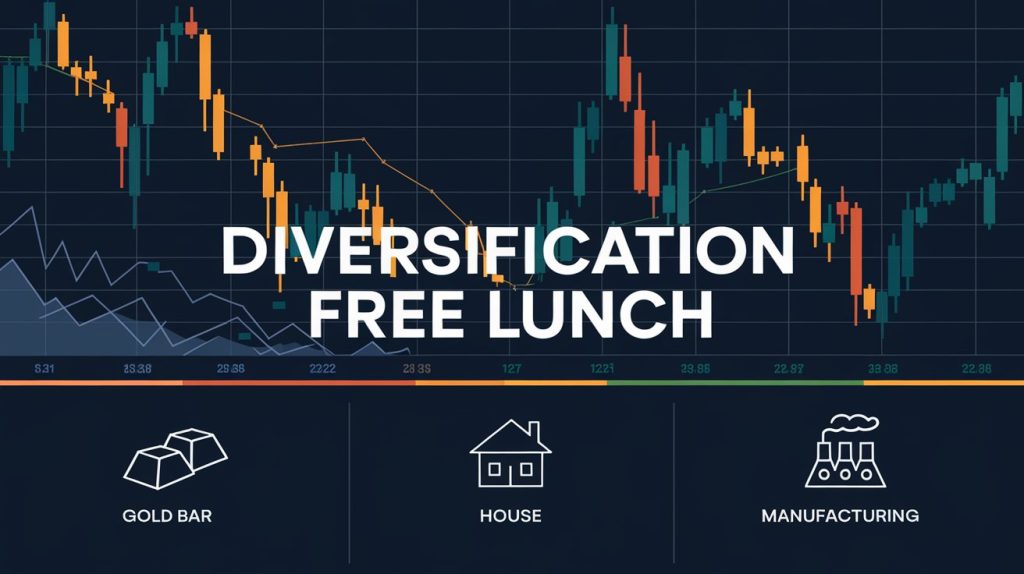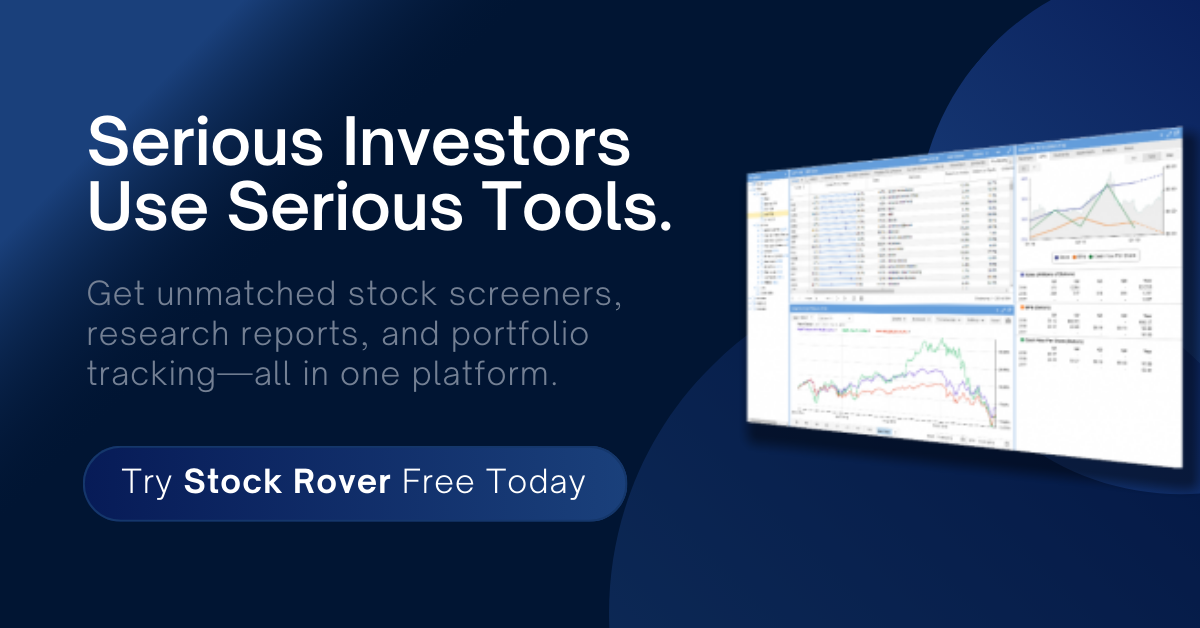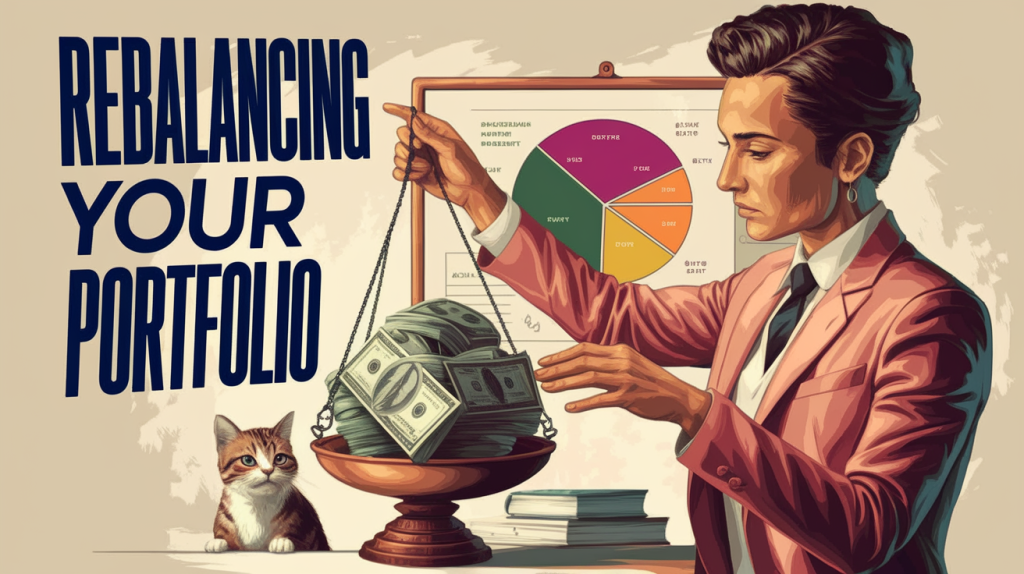
Harry Markowitz said this about diversification in investing: Diversification is the only free lunch in investing.
As I write this towards the end of 2024, we have seen a number of years where a very select group of stocks has dominated the market returns. The Magnificent 7 stocks, for example, contribute to a large chunk of S&P 500 returns recently, with the remainder of the stocks in the index making up for not much. Value investors would view this situation untenable. Heavy concentration in few stocks create unnecessary risk that can have detrimental effect on your portfolio returns.
But doesn’t Buffet swear by the rewards of concentrating your portfolio?
True, of course. But have you seen Buffett’s portfolio? He currently owns about 50 stocks in his portfolio.
Most value investors have 5+ stocks in their portfolio. A portfolio of 15-30 stocks can create enough diversification, beyond which the benefits do not increase much. A disciplined value investor is always on the lookout for new opportunities. Stocks come and go from the portfolio on a regular basis, even as a few core positions stay a long time.
A disciplined value investor does not concentrate all their stocks in one sector or industry. Value investing is the art of eliminating risk – and concentrating your portfolio in one sector or industry increases the risk of permanent capital loss if there is an industry-wide slowdown. Diversification reduces risk by spreading your chips across uncorrelated assets. This allows your portfolio to continue compounding at a good clip year after year.
As a value investor, you often have stocks in your portfolio that are very volatile. Having these stocks within a diversified portfolio will help blunt the highs and lows that come with these stocks. This will allow you to stay the course during turbulent times. If all your stocks are moving in lock-step, you will give up at the first significant dip.
Diversification has an additional benefit. Rebalancing your portfolio pumps your portfolio returns by harvesting volatility. This literally creates returns out of thin air. We will talk about this a little later.
What is the Diversification Free Lunch?
The phrase “diversification free lunch” originates from the idea that you can reduce portfolio risk without sacrificing returns simply by spreading your investments across different assets. This concept, popularized by economist Harry Markowitz, forms the backbone of modern portfolio theory. Unlike other strategies that require trade-offs, diversification allows you to smooth out the bumps in your investment journey without additional cost or effort.
For value investors, the diversification free lunch provides a unique advantage. By balancing your portfolio across a variety of undervalued stocks, you can protect your capital from the downside risks of individual positions while staying focused on intrinsic value.
At its core, diversification works because different assets often respond differently to market conditions. Some sectors, like technology, may soar during periods of economic growth, while others, such as utilities, provide stability during downturns. By combining assets that move independently or even in opposite directions, you can create a portfolio with lower overall volatility.
For example, a value investor might hold undervalued industrial stocks, which perform well during economic expansions, alongside consumer staples, which remain resilient during recessions. When one sector struggles, another may offset the loss, leading to smoother portfolio returns over time.
Benefits for Value Investors
Diversification aligns perfectly with the value investor’s long-term approach. While you may have conviction in the intrinsic value of individual stocks, diversification reduces the impact of being wrong about any single investment. It also provides a buffer against unexpected market events, such as regulatory changes or industry-specific downturns.
In practice, this means holding undervalued stocks across different industries, geographies, and market sizes. By doing so, you reduce reliance on any single economic factor, ensuring that your portfolio can weather the ups and downs of the market while allowing you to benefit from the eventual recovery of undervalued positions.
Why the Diversification Free Lunch is Real
Lowering Risk Without Lowering Returns
The magic of the diversification free lunch lies in its ability to reduce risk without diminishing potential returns. This counterintuitive idea is supported by modern portfolio theory, which shows that a well-diversified portfolio experiences less volatility while maintaining growth potential.
Consider a portfolio composed of undervalued stocks in sectors that respond differently to economic cycles. For instance, pairing high-growth tech stocks with steady dividend-paying utilities allows you to offset losses in one sector with gains in another. Over time, this balance results in a portfolio that grows steadily without exposing you to extreme fluctuations.
Historical data reinforces this concept: diversified portfolios have consistently outperformed concentrated ones in periods of market turbulence, with lower drawdowns and quicker recoveries.
Emotional Resilience During Market Stress
One of the most overlooked benefits of diversification is the psychological advantage it provides. As a value investor, you are often betting on the market’s inefficiencies, which may take time to correct. During this period, market volatility can test even the most patient investors.
A diversified portfolio helps mitigate extreme losses, reducing the temptation to panic-sell during downturns. For instance, if your portfolio includes both defensive stocks like consumer staples and cyclical ones like industrials, a downturn in the latter might be offset by stability in the former. This cushioning effect can help you stay committed to your long-term strategy.
Common Misunderstandings About Diversification in Investing
Despite its benefits, diversification is sometimes misunderstood, especially among value investors who may prefer concentrated portfolios. One common misconception is that diversification dilutes returns. However, research shows that a well-diversified portfolio doesn’t just reduce risk—it also enhances long-term performance by mitigating large losses that can take years to recover from.
Another myth is that diversification requires owning hundreds of stocks. In reality, you can achieve meaningful diversification with a focused portfolio of 20–30 carefully selected stocks across industries and geographies. This allows you to maintain the conviction and deep analysis that are hallmarks of value investing while enjoying the risk-reduction benefits of diversification.
By reducing portfolio risk, helping you stay calm during market turmoil, and dispelling myths about its drawbacks, the diversification free lunch offers value investors a proven path to long-term success.
Volatility Harvesting: Unlocking Another Layer of the Free Lunch
Volatility harvesting is a strategy that takes advantage of the natural ups and downs of the market to enhance returns. The idea is simple: when some assets in your portfolio increase in value while others decrease, you periodically rebalance by selling the outperformers and reinvesting in the underperformers. This process generates a “rebalancing premium” over time, allowing you to turn volatility—a factor many investors fear—into a tool for growth.
For example, imagine a portfolio with two uncorrelated stocks: a defensive utility company and a high-growth tech stock. During a tech rally, the stock’s value might increase significantly, while the utility stock lags. By rebalancing, you lock in gains from the tech stock and use them to buy more shares of the undervalued utility stock. When the cycle reverses, and the tech stock cools off while utilities rise, the rebalancing process rewards you again.
The Connection to Diversification
Diversification and volatility harvesting go hand in hand. For volatility harvesting to work effectively, your portfolio must contain assets that don’t move in perfect sync. This is why diversification is essential—it ensures your portfolio has uncorrelated or negatively correlated assets, creating the price dispersion needed for rebalancing opportunities.
For value investors, the connection is especially compelling. By building a portfolio of undervalued stocks across different sectors, geographies, or industries, you naturally create the conditions for effective volatility harvesting. For example, a value portfolio that includes cyclical stocks, dividend-paying defensives, and international equities will see price fluctuations that can be exploited through systematic rebalancing.
Practical Benefits for Value Investors
Volatility harvesting is a natural fit for value investing because it complements the strategy’s core principles: buying low and selling high. By rebalancing regularly, you systematically take profits from stocks that have appreciated beyond their intrinsic value and redeploy capital into undervalued opportunities.
This disciplined approach eliminates the need for perfect market timing and ensures you stay aligned with your long-term investment goals. It also prevents emotional decision-making, as rebalancing is based on predefined rules rather than market sentiment.
For example, consider a value portfolio allocated across undervalued industrials, utilities, and healthcare stocks. If industrials rally due to an economic boom, rebalancing allows you to trim those positions and reinvest in lagging healthcare stocks that remain undervalued. Over time, this process boosts returns while maintaining your portfolio’s overall stability.
And if you are a value investor like me who focuses primarily on small cap value stocks, volatility harvesting can be extra-beneficial. Small-cap value stocks tend to be highly volatile due to lack of liquidity – and if you can harvest this volatility, you can put your portfolio on a ramp to higher returns.
By combining diversification with volatility harvesting, value investors can extract even greater value from market fluctuations. This approach turns the diversification free lunch into a feast, offering both risk reduction and enhanced returns through disciplined, systematic action.
How Value Investors Can Maximize the Diversification Free Lunch
To fully capitalize on the diversification free lunch, a value investor must construct a portfolio that balances risk without sacrificing conviction. Start by identifying undervalued stocks across a range of industries, geographies, and market sizes. Diversify your holdings to include both cyclical sectors, like industrials and energy, and defensive ones, such as utilities and healthcare.
For example:
- Industries: Combine tech companies trading below intrinsic value with stable dividend-paying consumer staples.
- Geographies: Diversify into international markets to reduce reliance on a single country’s economy.
- Market Caps: Mix small-cap value stocks with large-cap stalwarts to balance growth potential and stability.
This approach ensures that your portfolio is not overly dependent on the performance of any single sector or economic factor, reducing downside risk while still allowing you to pursue value opportunities.
Implementing Volatility Harvesting
Volatility harvesting enhances the benefits of diversification by turning market fluctuations into an advantage. The key to effective volatility harvesting is disciplined rebalancing—selling outperformers and reinvesting in underperformers based on predetermined thresholds.
Here’s how you can implement volatility harvesting as a value investor:
- Set Allocation Targets: Decide on target percentages for each asset or sector in your portfolio.
- Establish Rebalancing Triggers: Rebalance whenever an asset deviates by a set percentage (e.g., 5%-10%) from its target allocation.
- Reinvest in Value: Use the proceeds from selling overvalued assets to buy undervalued stocks, ensuring that your portfolio remains aligned with your intrinsic value philosophy.
Example: Imagine you hold a portfolio split evenly between undervalued tech and consumer staple stocks. If tech rallies and its portfolio weight grows from 50% to 60%, you rebalance by selling tech and reallocating to undervalued consumer staples, locking in gains and buying low.
Tools and Resources
Managing a diversified portfolio and executing volatility harvesting may seem complex, but the right tools can simplify the process:
- Portfolio Trackers: Use platforms like Morningstar, Personal Capital, or Yahoo Finance to monitor allocations and track performance. I use Stock Rover and I fully recommend it as an ideal portfolio tracker for value investors.
- ETFs for Diversification: If individual stock selection is too time-consuming, consider value-oriented ETFs for sector or global diversification.
- Rebalancing Automation: Many brokers offer tools to automate rebalancing based on your chosen thresholds, ensuring discipline without constant manual effort.
By building a well-diversified portfolio, implementing volatility harvesting, and leveraging the right tools, value investors can maximize the benefits of the diversification free lunch. This approach not only reduces risk but also turns market volatility into a powerful ally in achieving long-term wealth.
Pitfalls to Avoid While Pursuing the Diversification Free Lunch
Willy-nilly diversification does not help.
Overdiversification: Diluting Returns
While diversification is essential, over-diversifying can backfire. Owning too many positions dilutes the potential impact of your best-performing investments and can make it harder to monitor the quality of your portfolio. For value investors, this risk is particularly acute because conviction and thorough analysis are critical to identifying undervalued opportunities.
To avoid overdiversification, focus on building a concentrated yet diversified portfolio. Aim for 20-30 carefully selected stocks spread across industries and regions. This strikes a balance between managing risk and maintaining conviction in your picks.
Costs of Rebalancing
Rebalancing is a cornerstone of volatility harvesting, but it can introduce transaction costs that eat into returns. Frequent buying and selling incur brokerage fees, taxes, and potential market slippage.
To minimize costs:
- Set Practical Rebalancing Thresholds: Avoid overly sensitive triggers, like rebalancing for every 1% deviation. Instead, use broader thresholds, such as 5%-10%.
- Use Tax-Advantaged Accounts: Where possible, execute rebalancing in accounts like IRAs or 401(k)s to defer taxes on gains.
- Leverage Low-Cost Brokers: Opt for platforms that offer commission-free trading to reduce fees.
Behavioral Challenges: Sticking to the Plan
One of the biggest threats to the diversification free lunch is emotional decision-making. Market downturns or sudden rallies can tempt you to deviate from your strategy, leading to poor timing and unnecessary portfolio churn.
To counter these tendencies:
- Follow Predefined Rules: Establish rebalancing and diversification guidelines when emotions are not in play.
- Stay Focused on the Long Term: Remember that the benefits of diversification and volatility harvesting accrue over time, even if short-term results seem discouraging.
- Use Automation: Tools that automate rebalancing can help you stay disciplined and avoid impulsive decisions.
Ignoring Correlations
Diversification only works if your assets have low or negative correlations. Failing to understand the relationships between your investments can lead to a false sense of security. For example, holding multiple tech stocks may seem diversified, but their high correlation can expose you to significant downside during a sector-specific downturn.
To ensure true diversification:
- Regularly review your portfolio to ensure correlations remain low, as market dynamics can change over time.
- Analyze correlation metrics between assets or sectors in your portfolio.
- Combine equities with other asset classes, such as bonds, REITs, or commodities, for broader diversification.
Software like Stock Rover gives you correlations between all positions in your portfolio.
Making the Most of the Diversification Free Lunch
The diversification free lunch is one of the most powerful tools in a value investor’s arsenal. By spreading your investments across uncorrelated assets, you can reduce risk, smooth out portfolio volatility, and build resilience against market downturns—all without sacrificing returns. Pairing this strategy with volatility harvesting takes the free lunch a step further, allowing you to turn price swings into a systematic advantage.
The key is to approach diversification and volatility harvesting with discipline. Avoid the traps of overdiversification, high rebalancing costs, and emotional decision-making. Instead, focus on building a well-constructed portfolio, setting clear rebalancing rules, and sticking to a long-term investment plan.
For value investors, this combination not only aligns with the principles of intrinsic value investing but also enhances your ability to capitalize on market inefficiencies. By embracing the diversification free lunch, you can create a portfolio that grows steadily while remaining resilient through the ups and downs of the market.

Shailesh Kumar, MBA is the founder of Astute Investor’s Calculus, where he shares high-conviction small-cap value ideas, stock reports, and investing strategies.
His work has been featured in the New York Times and profiled on Wikipedia. He previously ran Value Stock Guide, one of the earliest value investing platforms online.
Subscribe to the Inner Circle to access premium stock reports and strategy insights.
Featured in:








